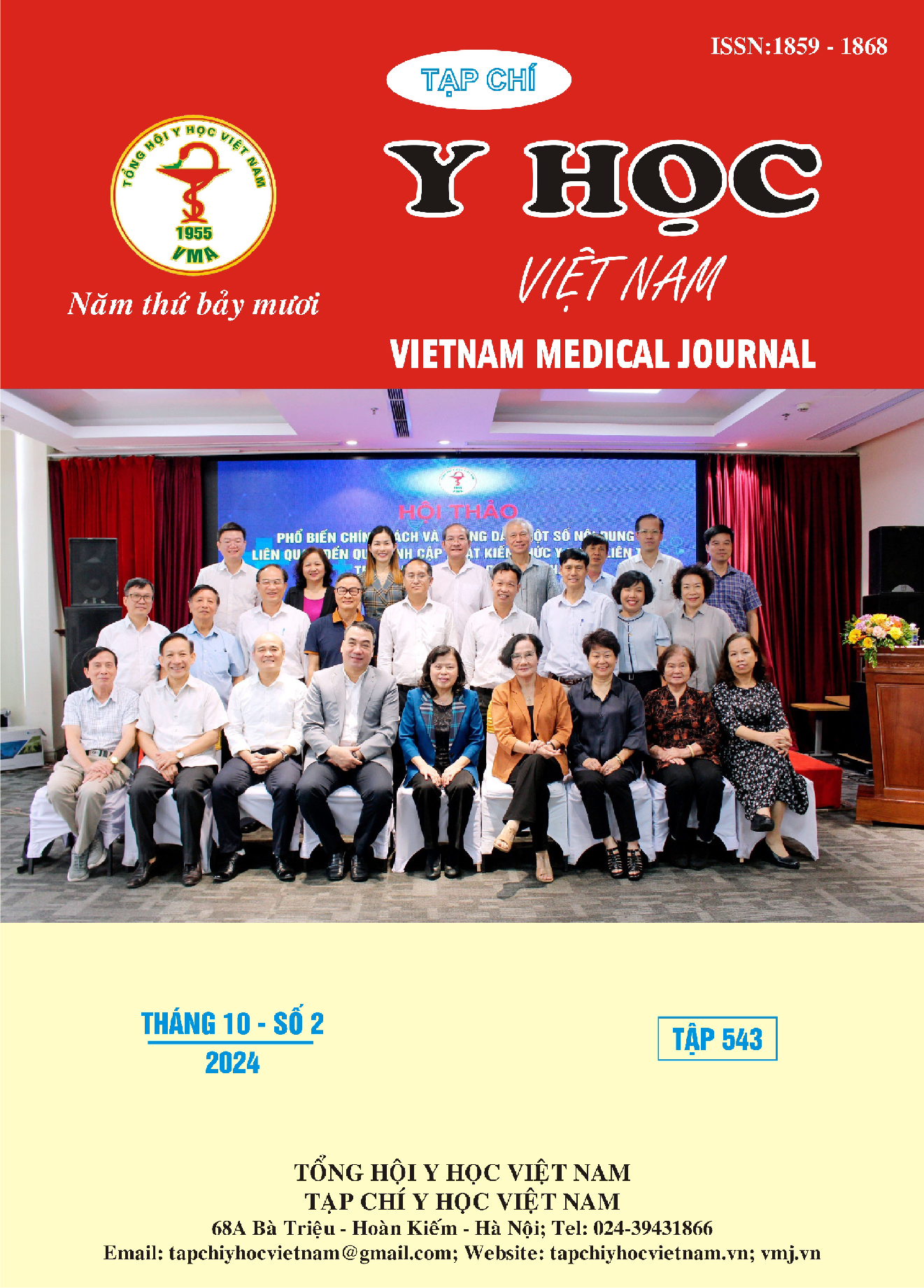ETIOLOGIES AND TREATMENT OUTCOMES OF RESPIRATORY DISTRESS IN PRETERM NEONATES IN THE NEONATAL DEPARTMENT OF SAINT-PAUL GENERAL HOSPITAL
Main Article Content
Abstract
Objectives: To describe the etiologies and treatment outcomes of respiratory distress in preterm neonates. Methods: A cross-sectional descriptive study was conducted on 181 preterm neonates with respiratory distress in the Neonatal Department of Saint-Paul General Hospital from August 2022 to March 2024. Results: The study population predominantly comprised male neonates (72.9%), with a mean gestational age of 33.5 ± 3.6 weeks and a mean birth weight of 2133.8 ± 629.0 grams. Severe respiratory distress was observed in 22% of cases, while 78% presented with mild respiratory distress. The majority of cases (69%) were attributed to a single etiology, with pulmonary disorders, primarily hyaline membrane disease (82.3%), being the most prevalent cause. 92,2% of patients recovered and were discharged, while 6.1% either died or were discharged at their family's request, and 1.7% were transferred to other facilities. Factors associated with poor treatment outcomes included: extremely preterm birth (<28 weeks), extremely low birth weight (<1000 grams), and severe respiratory distress at admission. Conclusions: Hyaline membrane disease was the principal etiology of respiratory distress in premature neonates. Most cases demonstrated a positive response to treatment with a high rate of recovery and hospital discharge.
Article Details
Keywords
: respiratory distress; neonate, pre-term.
References
2. Newborns: improving survival and well-being. Accessed November 8, 2023. https://www.who.int/news-room/fact-sheets/detail/newborns-reducing-mortality
3. Nguyễn Tâm Long, Lê Minh Trác, Lê Trương Tuyết Minh. Suy hô hấp ở trẻ sinh non tại Bệnh viện Phụ sản Trung ương: Kết quả điều trị và một số yếu tố liên quan. Tạp chí Y Dược Lâm sàng 108. Published online 2020:58-64.
4. Ef E, Da B, Aa G. Incidence, time to recovery and predictors among neonates admitted with respiratory distress to the neonatal intensive care unit at the University of Gondar Comprehensive Specialized Hospital, Northwest Ethiopia, 2021. PloS one. 2022;17(12). doi:10.1371/journal. pone.0278887
5. Nguyễn Thị Quỳnh Nga, Nguyễn Thị Vân, Nguyễn Thu Vân. Hội chứng suy hô hấp ở trẻ sơ sinh. In: Bài giảng Nhi khoa. Vol 1. Nhà xuất bản Y học; 2020:104-118.
6. Huyền NTL, Anh ĐT, Đếm PV, et al. Kết quả chăm sóc trẻ sơ sinh non tháng suy hô hấp và một số yếu tố liên quan tại Trung tâm Nhi khoa bệnh viện Bạch Mai 2023. VMJ. 2024;534(1B). doi:10.51298/vmj.v534i1B.8226
7. Liu J, Yang N, Liu Y. High-risk Factors of Respiratory Distress Syndrome in Term Neonates: A Retrospective Case-control Study. Balkan Med J. 2014; 31(1): 64-68. doi: 10.5152/balkanmedj. 2014.8733
8. Hương NTX, Dung LTK, Sơn ĐT, et al. Nguyên nhân suy hô hấp ở trẻ sơ sinh tại Trung tâm Nhi khoa - Bệnh viện Trung ương Thái Nguyên. VMJ. 2023;530(1). doi:10.51298/vmj.v530i1.6601
9. Kaa B, M M, Ea AE. Risk Factors of Respiratory Diseases Among Neonates in Neonatal Intensive Care Unit of Qena University Hospital, Egypt. Annals of global health. 2020;86(1). doi:10.5334/ aogh.2739
10. Nguyễn PTH, Trần CT, Nguyễn TN. Đánh giá kết quả điều trị suy hô hấp sơ sinh và một số yếu tố liên quan. VMJ. 2022;515(1). doi:10.51298/ vmj.v515i1.2680


